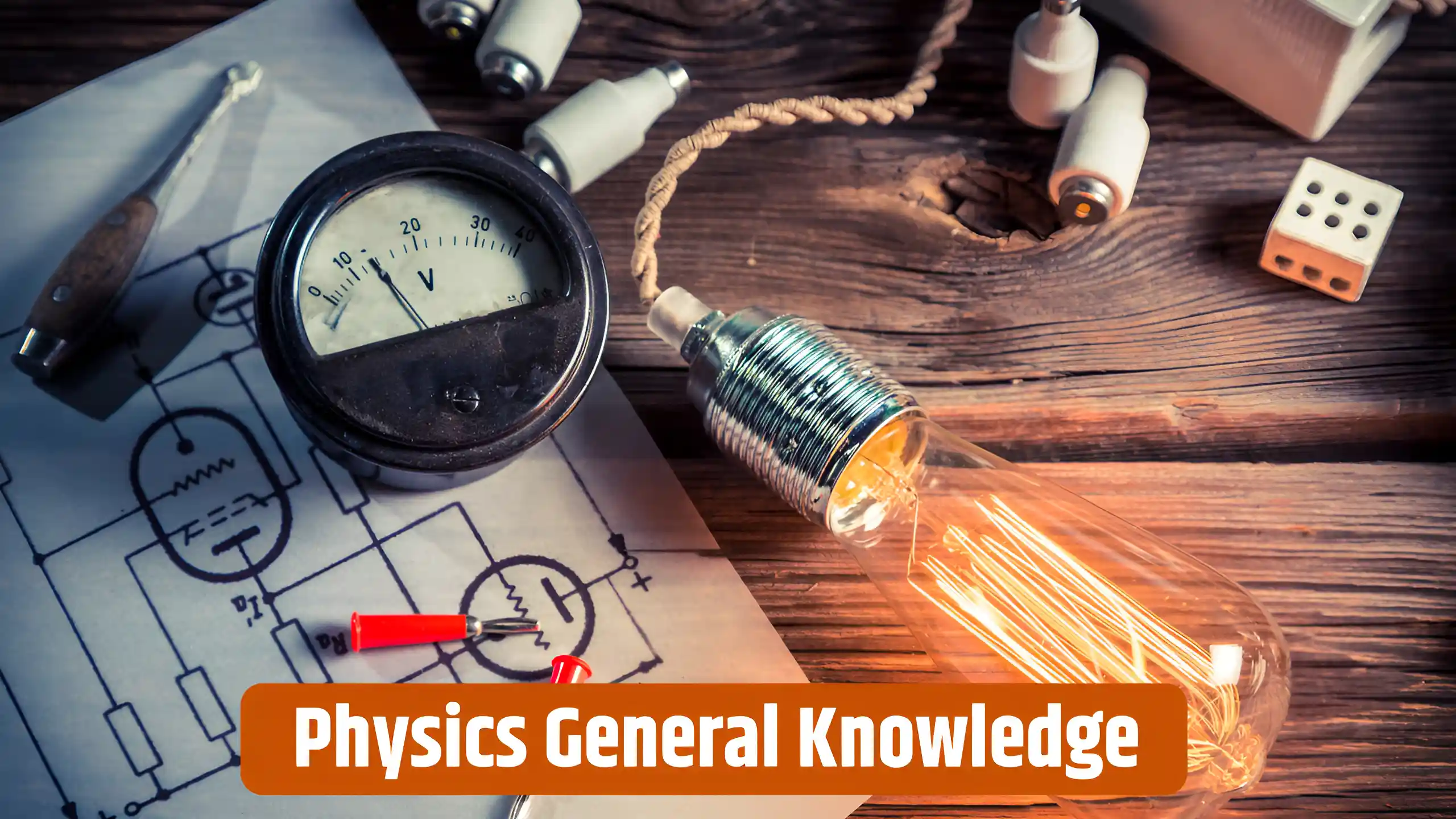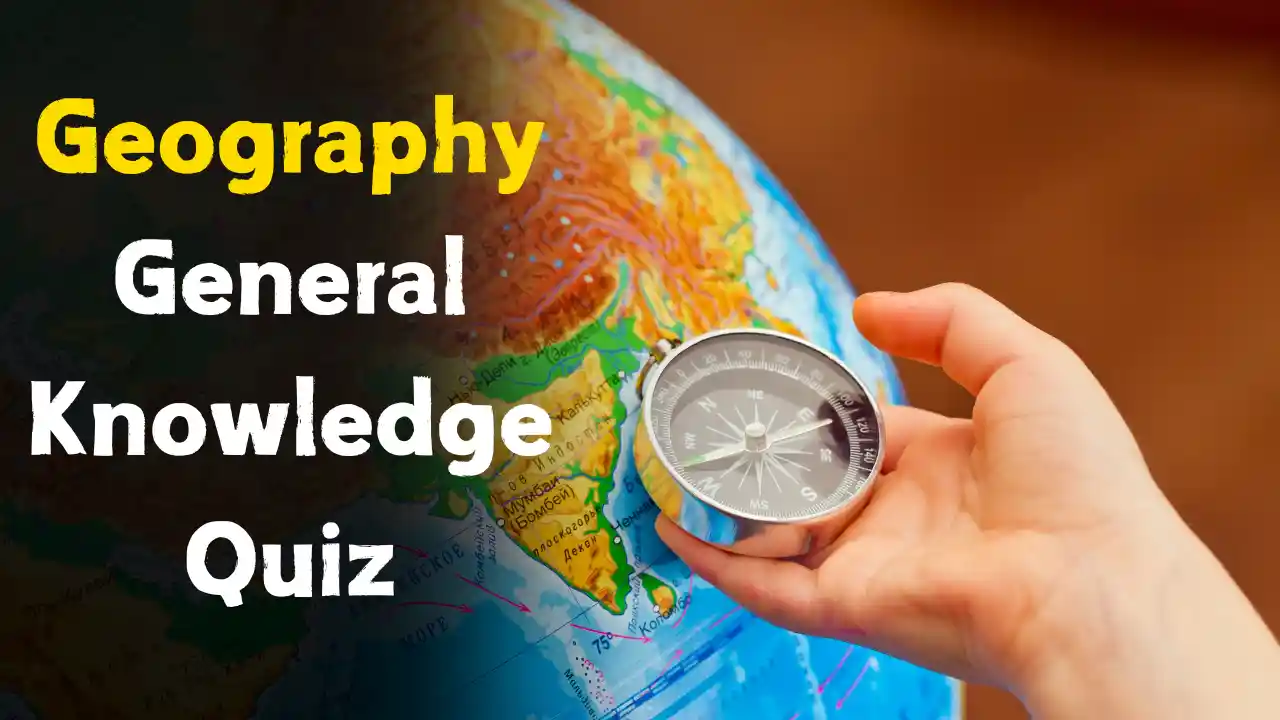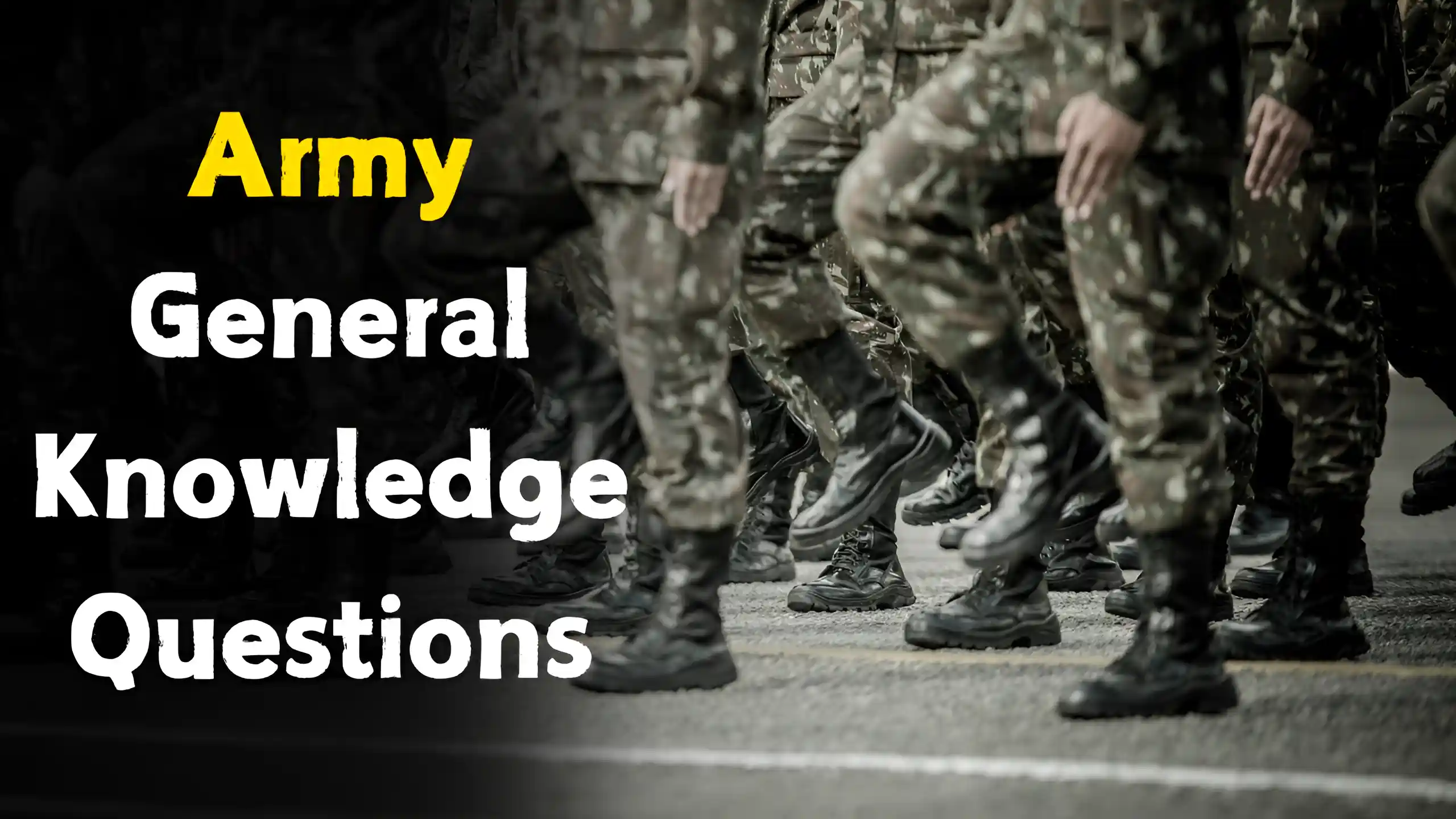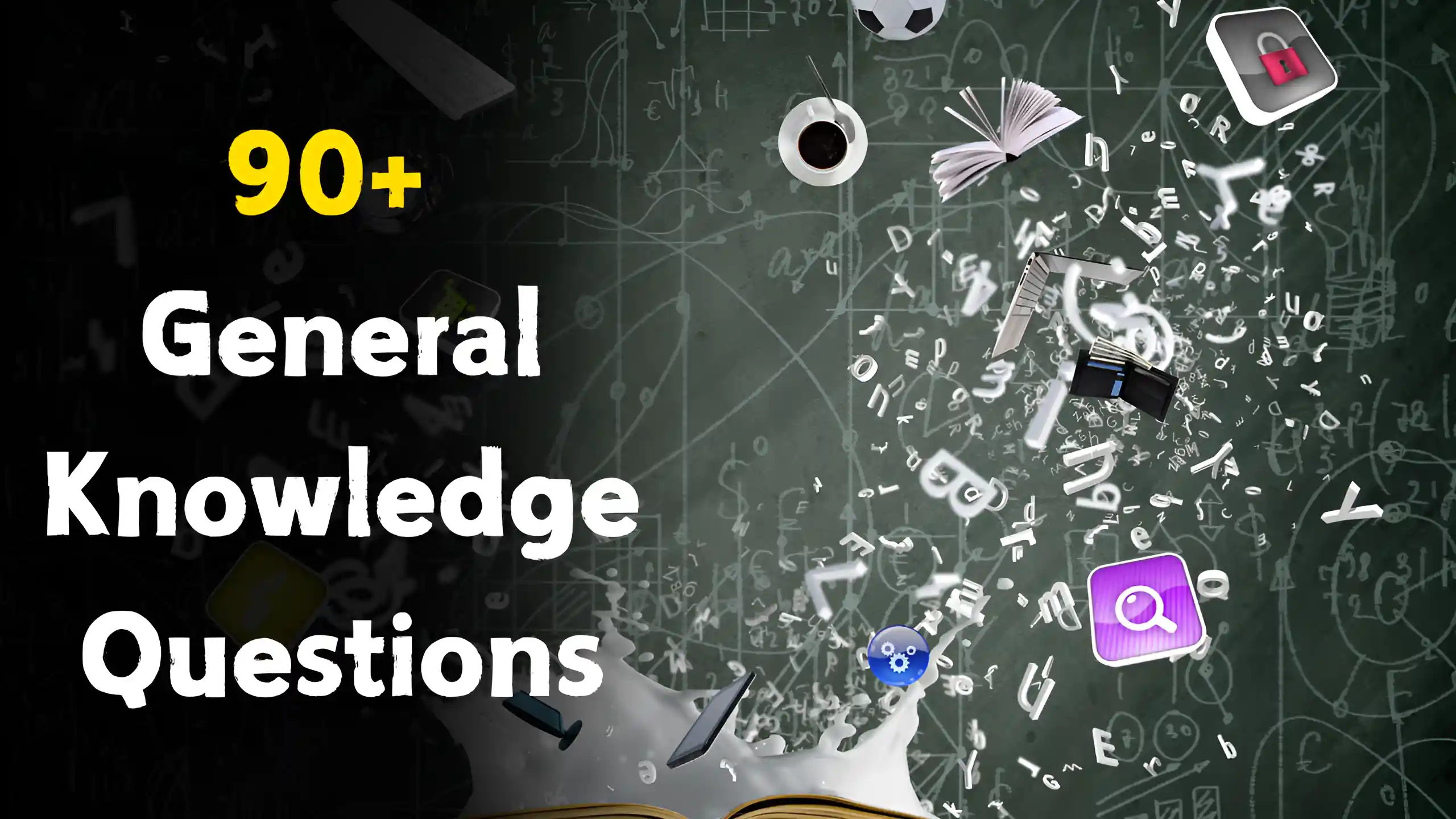Physics is the fundamental science that explains the natural phenomena of the universe, from the tiniest particles to the vast cosmos. This article presents 100 general knowledge questions about physics, covering concepts, laws, and discoveries. It is ideal for students, quiz enthusiasts, and those looking to deepen their understanding of the physical world.
Physics General Knowledge Quiz
1. Who is known as the “Father of Physics”?
a) Isaac Newton
b) Albert Einstein
c) Galileo Galilei
d) Stephen Hawking
Answer: Galileo Galilei
2. What is the speed of light in a vacuum?
a) 3 × 10⁵ m/s
b) 3 × 10⁶ m/s
c) 3 × 10⁷ m/s
d) 3 × 10⁸ m/s
Answer: 3 × 10⁸ m/s
3. Which law states that energy cannot be created or destroyed?
a) Newton’s First Law
b) Law of Conservation of Energy
c) Hooke’s Law
d) Ohm’s Law
Answer: Law of Conservation of Energy
4. Who proposed the theory of relativity?
a) Isaac Newton
b) Nikola Tesla
c) Albert Einstein
d) James Clerk Maxwell
Answer: Albert Einstein
5. Which of the following is a scalar quantity?
a) Force
b) Velocity
c) Speed
d) Acceleration
Answer: Speed
6. What is the unit of force in the SI system?
a) Joule
b) Newton
c) Watt
d) Pascal
Answer: Newton
7. Which phenomenon explains why the sky appears blue?
a) Reflection
b) Refraction
c) Scattering of Light
d) Diffraction
Answer: Scattering of Light
8. What is the value of acceleration due to gravity on Earth?
a) 8.8 m/s²
b) 9.8 m/s²
c) 10.8 m/s²
d) 11.8 m/s²
Answer: 9.8 m/s²
9. Who discovered the laws of motion?
a) Isaac Newton
b) Galileo Galilei
c) Johannes Kepler
d) Albert Einstein
Answer: Isaac Newton
10. What is the unit of electric current?
a) Volt
b) Ampere
c) Ohm
d) Joule
Answer: Ampere
11. Which type of lens is used to correct myopia?
a) Convex Lens
b) Concave Lens
c) Cylindrical Lens
d) Plane Lens
Answer: Concave Lens
12. Which device is used to measure atmospheric pressure?
a) Barometer
b) Thermometer
c) Hygrometer
d) Altimeter
Answer: Barometer
13. What is the SI unit of work?
a) Joule
b) Newton
c) Watt
d) Pascal
Answer: Joule
14. Which law relates current, voltage, and resistance?
a) Faraday’s Law
b) Ohm’s Law
c) Coulomb’s Law
d) Ampere’s Law
Answer: Ohm’s Law
15. Who discovered radioactivity?
a) Marie Curie
b) Henri Becquerel
c) Wilhelm Roentgen
d) J.J. Thomson
Answer: Henri Becquerel
16. What is the unit of frequency?
a) Hertz (Hz)
b) Joule (J)
c) Newton (N)
d) Watt (W)
Answer: Hertz (Hz)
17. What is the phenomenon of splitting white light into its components called?
a) Reflection
b) Dispersion
c) Diffraction
d) Refraction
Answer: Dispersion
18. What does E = mc² represent?
a) Law of Motion
b) Theory of Relativity
c) Energy-Mass Equivalence
d) Conservation of Momentum
Answer: Energy-Mass Equivalence
19. Which instrument is used to measure electric current?
a) Voltmeter
b) Ammeter
c) Galvanometer
d) Multimeter
Answer: Ammeter
20. Which property of sound determines its pitch?
a) Amplitude
b) Frequency
c) Wavelength
d) Velocity
Answer: Frequency
21. Which law explains the bending of light as it passes from one medium to another?
a) Hooke’s Law
b) Snell’s Law
c) Faraday’s Law
d) Coulomb’s Law
Answer: Snell’s Law
22. What is the unit of power in the SI system?
a) Watt
b) Joule
c) Ampere
d) Newton
Answer: Watt
23. Which particle is negatively charged?
a) Proton
b) Neutron
c) Electron
d) Photon
Answer: Electron
24. Which property of a wave determines its loudness?
a) Amplitude
b) Frequency
c) Wavelength
d) Velocity
Answer: Amplitude
25. Who discovered the X-rays?
a) Wilhelm Roentgen
b) Henri Becquerel
c) Ernest Rutherford
d) Marie Curie
Answer: Wilhelm Roentgen
26. What is the SI unit of pressure?
a) Pascal
b) Newton
c) Joule
d) Watt
Answer: Pascal
27. Which branch of physics deals with the behavior of light?
a) Optics
b) Thermodynamics
c) Mechanics
d) Acoustics
Answer: Optics
28. Which gas is responsible for the greenhouse effect?
a) Carbon Dioxide (CO₂)
b) Oxygen (O₂)
c) Nitrogen (N₂)
d) Hydrogen (H₂)
Answer: Carbon Dioxide (CO₂)
29. Who formulated the laws of planetary motion?
a) Johannes Kepler
b) Galileo Galilei
c) Isaac Newton
d) Albert Einstein
Answer: Johannes Kepler
30. Which type of mirror is used in car headlights?
a) Concave Mirror
b) Convex Mirror
c) Plane Mirror
d) Cylindrical Mirror
Answer: Concave Mirror
31. What is the term for the resistance of a fluid to flow?
a) Viscosity
b) Density
c) Buoyancy
d) Elasticity
Answer: Viscosity
32. Which scientist discovered the electron?
a) J.J. Thomson
b) Ernest Rutherford
c) Niels Bohr
d) James Chadwick
Answer: J.J. Thomson
33. What is the principle of a lever based on?
a) Conservation of Energy
b) Torque and Fulcrum
c) Elasticity
d) Gravitational Force
Answer: Torque and Fulcrum
34. What is the unit of magnetic field strength?
a) Tesla
b) Gauss
c) Weber
d) Ampere
Answer: Tesla
35. What is the angle of incidence equal to in a plane mirror?
a) Angle of Reflection
b) Angle of Refraction
c) Critical Angle
d) Brewster’s Angle
Answer: Angle of Reflection
36. Which type of wave is sound?
a) Longitudinal Wave
b) Transverse Wave
c) Electromagnetic Wave
d) Standing Wave
Answer: Longitudinal Wave
37. What is the name of the device used to measure electric potential difference?
a) Voltmeter
b) Ammeter
c) Ohmmeter
d) Galvanometer
Answer: Voltmeter
38. Which law states that the current through a conductor is directly proportional to the voltage across it?
a) Ohm’s Law
b) Faraday’s Law
c) Coulomb’s Law
d) Ampere’s Law
Answer: Ohm’s Law
39. What is the phenomenon where light bends around corners or edges?
a) Diffraction
b) Refraction
c) Dispersion
d) Scattering
Answer: Diffraction
40. Which instrument is used to measure humidity in the air?
a) Hygrometer
b) Barometer
c) Thermometer
d) Altimeter
Answer: Hygrometer
41. What is the smallest unit of matter?
a) Atom
b) Molecule
c) Proton
d) Electron
Answer: Atom
42. Which type of waves are used in mobile communication?
a) Radio Waves
b) Infrared Waves
c) Microwaves
d) X-rays
Answer: Radio Waves
43. Which law explains the buoyant force acting on an object submerged in a fluid?
a) Archimedes’ Principle
b) Bernoulli’s Principle
c) Pascal’s Law
d) Boyle’s Law
Answer: Archimedes’ Principle
44. What is the process of converting a solid directly into a gas called?
a) Sublimation
b) Evaporation
c) Condensation
d) Vaporization
Answer: Sublimation
45. Who discovered the neutron?
a) James Chadwick
b) Ernest Rutherford
c) J.J. Thomson
d) Niels Bohr
Answer: James Chadwick
46. What is the SI unit of temperature?
a) Kelvin
b) Celsius
c) Fahrenheit
d) Joule
Answer: Kelvin
47. Which scientist proposed the wave theory of light?
a) Thomas Young
b) Isaac Newton
c) Albert Einstein
d) Christian Huygens
Answer: Christian Huygens
48. What is the force that keeps planets in orbit around the sun?
a) Gravitational Force
b) Electromagnetic Force
c) Nuclear Force
d) Centrifugal Force
Answer: Gravitational Force
49. What is the property of a material to return to its original shape after deformation?
a) Elasticity
b) Plasticity
c) Viscosity
d) Rigidity
Answer: Elasticity
50. Which type of radiation has the highest energy?
a) Gamma Rays
b) X-rays
c) Ultraviolet Rays
d) Infrared Rays
Answer: Gamma Rays
51. Which branch of physics deals with the study of heat and temperature?
a) Thermodynamics
b) Optics
c) Acoustics
d) Electromagnetism
Answer: Thermodynamics
52. What is the speed of sound in air at room temperature?
a) 330 m/s
b) 343 m/s
c) 350 m/s
d) 360 m/s
Answer: 343 m/s
53. Which scientist is associated with the discovery of the photoelectric effect?
a) Albert Einstein
b) Niels Bohr
c) Max Planck
d) James Clerk Maxwell
Answer: Albert Einstein
54. Which property of an object determines its inertia?
a) Mass
b) Velocity
c) Acceleration
d) Density
Answer: Mass
55. What is the device used to convert mechanical energy into electrical energy?
a) Generator
b) Motor
c) Transformer
d) Rectifier
Answer: Generator
56. What is the phenomenon of heat transfer through direct contact called?
a) Conduction
b) Convection
c) Radiation
d) Evaporation
Answer: Conduction
57. Which scientist formulated the laws of electromagnetism?
a) James Clerk Maxwell
b) Michael Faraday
c) Nikola Tesla
d) Andre-Marie Ampere
Answer: James Clerk Maxwell
58. What is the unit of electric resistance?
a) Ohm
b) Volt
c) Ampere
d) Coulomb
Answer: Ohm
59. Which instrument is used to measure the intensity of earthquakes?
a) Seismograph
b) Barometer
c) Hydrometer
d) Altimeter
Answer: Seismograph
60. Which phenomenon explains the twinkling of stars?
a) Atmospheric Refraction
b) Diffraction
c) Reflection
d) Dispersion
Answer: Atmospheric Refraction
61. Which type of mirror is used as a rearview mirror in vehicles?
a) Convex Mirror
b) Concave Mirror
c) Plane Mirror
d) Cylindrical Mirror
Answer: Convex Mirror
62. What is the unit of charge in the SI system?
a) Coulomb
b) Ampere
c) Joule
d) Volt
Answer: Coulomb
63. Which law explains the relationship between pressure and volume of a gas at constant temperature?
a) Boyle’s Law
b) Charles’s Law
c) Pascal’s Law
d) Avogadro’s Law
Answer: Boyle’s Law
64. What is the term for a material that does not allow the flow of electricity?
a) Insulator
b) Conductor
c) Semiconductor
d) Dielectric
Answer: Insulator
65. Which particle is responsible for the production of light in a bulb?
a) Electrons
b) Protons
c) Neutrons
d) Photons
Answer: Photons
66. Which property of light explains the formation of shadows?
a) Rectilinear Propagation
b) Diffraction
c) Reflection
d) Scattering
Answer: Rectilinear Propagation
67. Which scientist developed the laws of planetary motion?
a) Johannes Kepler
b) Galileo Galilei
c) Isaac Newton
d) Tycho Brahe
Answer: Johannes Kepler
68. What is the unit of gravitational potential energy?
a) Joule
b) Newton
c) Watt
d) Pascal
Answer: Joule
69. What is the process of changing liquid into vapor called?
a) Evaporation
b) Condensation
c) Sublimation
d) Vaporization
Answer: Evaporation
70. Which type of radiation is used in microwave ovens?
a) Microwaves
b) Infrared Rays
c) Ultraviolet Rays
d) Gamma Rays
Answer: Microwaves
71. Which physical quantity is measured in decibels (dB)?
a) Sound Intensity
b) Temperature
c) Pressure
d) Magnetic Field
Answer: Sound Intensity
72. What is the term for the distance traveled by a wave in one complete cycle?
a) Wavelength
b) Frequency
c) Amplitude
d) Velocity
Answer: Wavelength
73. What is the name of the weakest fundamental force in nature?
a) Gravitational Force
b) Electromagnetic Force
c) Strong Nuclear Force
d) Weak Nuclear Force
Answer: Gravitational Force
74. Which scientist is known for his work on the motion of falling objects?
a) Galileo Galilei
b) Isaac Newton
c) Johannes Kepler
d) Albert Einstein
Answer: Galileo Galilei
75. What is the device used to store energy in the form of electric charge?
a) Capacitor
b) Resistor
c) Inductor
d) Transformer
Answer: Capacitor
76. What is the term for the time taken for one complete oscillation of a wave?
a) Period
b) Frequency
c) Amplitude
d) Wavelength
Answer: Period
77. Which law states that every action has an equal and opposite reaction?
a) Newton’s Third Law
b) Newton’s First Law
c) Newton’s Second Law
d) Hooke’s Law
Answer: Newton’s Third Law
78. Which instrument is used to measure the speed of wind?
a) Anemometer
b) Barometer
c) Hygrometer
d) Altimeter
Answer: Anemometer
79. Which type of energy is possessed by a body due to its motion?
a) Kinetic Energy
b) Potential Energy
c) Thermal Energy
d) Chemical Energy
Answer: Kinetic Energy
80. What is the principle behind hydraulic machines?
a) Pascal’s Law
b) Bernoulli’s Principle
c) Archimedes’ Principle
d) Newton’s First Law
Answer: Pascal’s Law
81. What is the unit of refractive index?
a) It has no unit
b) Meter
c) Hertz
d) Joule
Answer: It has no unit
82. What is the term for materials that allow electricity to flow through them?
a) Conductors
b) Insulators
c) Semiconductors
d) Superconductors
Answer: Conductors
83. Which scientist is associated with the discovery of electromagnetic waves?
a) James Clerk Maxwell
b) Michael Faraday
c) Heinrich Hertz
d) Nikola Tesla
Answer: Heinrich Hertz
84. What is the SI unit of angular velocity?
a) Radian per second
b) Meter per second
c) Degree per second
d) Cycle per second
Answer: Radian per second
85. What is the device used to measure the voltage across a component?
a) Voltmeter
b) Ammeter
c) Ohmmeter
d) Galvanometer
Answer: Voltmeter
86. Which type of wave requires a medium to travel?
a) Mechanical Wave
b) Electromagnetic Wave
c) Transverse Wave
d) Longitudinal Wave
Answer: Mechanical Wave
87. Which branch of physics deals with the study of fluids in motion?
a) Hydrodynamics
b) Aerodynamics
c) Fluid Statics
d) Thermodynamics
Answer: Hydrodynamics
88. What is the phenomenon of light bending as it passes through a prism?
a) Refraction
b) Diffraction
c) Dispersion
d) Scattering
Answer: Dispersion
89. Which type of energy is stored in a compressed spring?
a) Elastic Potential Energy
b) Kinetic Energy
c) Thermal Energy
d) Gravitational Potential Energy
Answer: Elastic Potential Energy
90. What is the term for the highest point of a wave?
a) Crest
b) Trough
c) Amplitude
d) Frequency
Answer: Crest
91. What is the relationship between voltage, current, and resistance?
a) V = IR
b) V = I/R
c) V = R/I
d) V = I²R
Answer: V = IR
92. What is the term for the lowest point of a wave?
a) Trough
b) Crest
c) Amplitude
d) Frequency
Answer: Trough
93. Which scientist discovered that electric current produces a magnetic field?
a) Hans Christian Ørsted
b) Michael Faraday
c) James Clerk Maxwell
d) Nikola Tesla
Answer: Hans Christian Ørsted
94. Which type of lens is used to magnify objects?
a) Convex Lens
b) Concave Lens
c) Cylindrical Lens
d) Plane Lens
Answer: Convex Lens
95. What is the term for the amount of matter in an object?
a) Mass
b) Weight
c) Volume
d) Density
Answer: Mass
96. What is the process of converting heat into mechanical energy called?
a) Thermodynamic Conversion
b) Heat Engine Process
c) Mechanical Work
d) Energy Transformation
Answer: Heat Engine Process
97. What is the name of the force that opposes motion between two surfaces?
a) Friction
b) Tension
c) Compression
d) Gravitational Force
Answer: Friction
98. What is the term for the force acting per unit area?
a) Pressure
b) Stress
c) Strain
d) Torque
Answer: Pressure
99. What is the name of the point where light rays converge after passing through a convex lens?
a) Focus
b) Vertex
c) Center of Curvature
d) Principal Axis
Answer: Focus
100. Which physical quantity is defined as the rate of doing work?
a) Power
b) Energy
c) Force
d) Velocity
Answer: Power
Also Read This :
Computer General Knowledge 100 Questions and Answers
Jammu & Kashmir General Knowledge A Quiz Guide with 100 Questions







